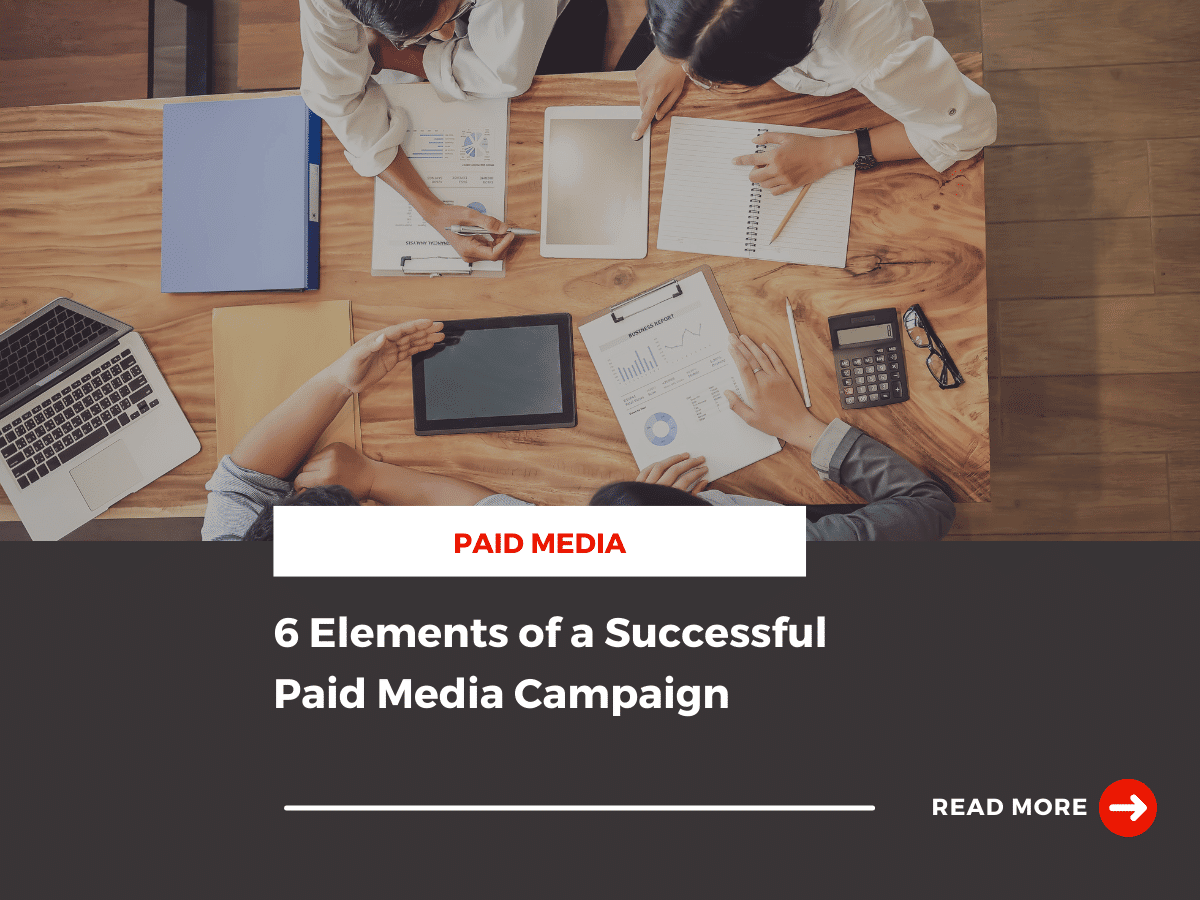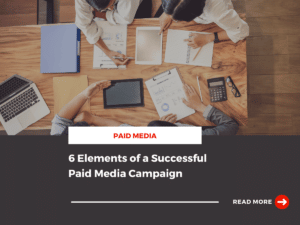Do you feel like your business isn’t getting any new viable leads at the top of your funnel? Do you have a hard time keeping your brand top of mind with your current audience? Is your business looking to scale and grow into different markets?
It sounds like you could benefit from a paid marketing strategy.
Paid media marketing is one of the most effective digital marketing channels for brand awareness. With the help of paid initiatives, your brand can reach a much larger audience, increase website traffic, and invite prospects to explore your website or take advantage of new offers.
However, to see results with paid marketing, you can’t just add budget to your top-performing content and hope for the best. You’ll need to take a strategic approach and understand the paid media best practices.
Here’s everything you need to know:
What is Paid Media Marketing?
Paid media marketing is any marketing effort that involves a paid placement. This includes social media ads, pay-per-click, display ads, and branded content. With the help of a paid advertising marketing strategy, your brand can expand to new markets, increase your revenue, and build brand awareness.
Paid media marketing is versatile and allows you to be creative with your approach. Companies can use paid media to meet a variety of different goals. Whether it’s to increase website traffic for a new product launch or to improve your conversion rate across the board: With a paid media plan, you can gain the exposure your brand needs to see an increase in revenue.
Essentials of a Paid Media Strategy
Benchmark Goals
Before diving into paid advertising, you’ll need to set goals. These goals will help you determine how effective your paid initiatives are and help you find new opportunities.
While building out goals, always use the S.M.A.R.T goals model. Make sure they are specific, measurable, achievable, relevant, and timely. However, we want to challenge you to take this one step further with benchmark goals.
Benchmarking is a beneficial tool that helps you understand how your efforts compare to your competitors. With benchmark goals, your goal is to go beyond your own progress and look for new ways to stay competitive across all advertising platforms. As you consider your goals, you can use benchmarks to help you develop attainable S.M.A.R.T. goals and find new and innovative ways to improve.
There are three types of benchmarks you should know about: Competitive, industry, and historical. Here’s a breakdown of how they work:
-
- Competitive: Compare how your advertising strategy and results compare to your competitors.
- Industry: Look at how your performance compares to other businesses within your industry.
- Historical: Compare your current performance with your past performance.
Keeping a close eye on all three can help you be more strategic with your advertising budget and provide insights on optimizing your paid marketing.
The most popular marketing tools used to help you with competitive benchmarks of your PPC advertising performance are SEMrush, Moz, and Ahrefs. There are also resources readily available online to help you benchmark your goals for future campaigns on social media and other platforms.
Choose an Advertising Platform
There are several advertising platforms your business can take advantage of. The brands that see success with paid advertising take advantage of multiple advertising platforms at a time. If you put all your eggs into one basket, you risk spending all your paid marketing budgets on the wrong platform.
Here are a few advertising platforms to consider:
-
- Facebook Ads
- LinkedIn Ads
- Twitter Ads
- Instagram Ads
- Pinterest Ads
- Google Ads
- Bing Ads
- Amazon Ads
That’s just to name a few to help you get started on building a paid marketing strategy. Start by testing several different advertising platforms at once. As the months and quarters go by, you can continue to add more budget towards the platform that is seeing the highest return on investment.
Create Visual Elements & Copy
Did you know that people only retain 10% of the information they read within 72 hours? However, they remember 65% of all text-based information paired with a picture. This is why visuals are so essential to your paid media plan.
If you want to stand out from your competitors and increase brand awareness, you’ll need visual-appealing elements and well-thought-out copy. Everything needs to be clear, concise, and purposeful. The visual component of your digital advertising needs to work together and complement one another and positively impact your bottom line.
Here are a few tips to help you get started:
-
- If you’re building visuals from scratch, always consider visual hierarchy
- Use video content
- Repurpose user-generated content, customer reviews, infographics, or statistics
- Keep your content bold and eye-catching
- Always include a CTA
Keep in mind not every advertising platform requires visual elements. PPC campaigns rely heavily on keyword research and copy to draw individuals to your website. So you’ll want to use these tips to create visually-compelling landing pages instead.
Create Custom Landing Pages
Custom landing pages allow you to position the content on the page to meet the consumer’s needs. If someone goes from your paid ad to your main webpage, it may be overwhelming and confusing. That’s because the information on the homepage is set up for a different audience and a different user experience.
Instead, think critically about the customer experience and what action you want them to take. Are you offering a free demo or trial of your SaaS product? You’ll want to make this bold on the page and add a CTA that pulls everything together. Do you want to push individuals to download a free report? Create a landing page with a form and a few key bullet points for the report.
Every marketing initiative is different. However, there are a few universal elements that every landing page needs. These include:
-
- A headline and a sub-headline
- At least one image that supports the content
- A bold, clear CTA
- Brief description or copy
Don’t be afraid to add video content, either. Studies suggest that incorporating video content on your landing page can boost conversions by up to 86%.
Review Metrics & Optimize
Your metrics and data are going to help you understand the effectiveness of your paid marketing. It will determine your ROI and help you decide how you want to spend that budget in the future. If you aren’t regularly reviewing your metrics, you risk spending your budget in the wrong places.
Set time on your calendar every week, month, and quarter to look at your paid media advertising performance. This will hold your marketing team accountable for staying ahead of the data and analysis, so you can optimize your campaigns and improve your ROAS.
A/B Testing
A/B testing is when you send two variations of an advertisement to your target audience to see which is the most effective. This approach allows you to make beneficial changes to your strategy that positively impact your bottom line. When you A/B test your paid advertising, you can compare your CTAs, copy, and visual approach.
Here are some tips to effectively A/B test your paid media:
-
- Only test one change at a time
- Compare data after all of the results are in
- Look at total engagements, click-through rate, and conversions
- Continue to test different elements
Get More From Your Paid Marketing with Kanbar Digital
Ready to get more from your digital marketing initiatives with paid advertising strategy? You’ve come to the right place. At Kanbar Digital, we can help you implement paid media best practices to help you see results. For every client we work with, we take a unique approach to crafting a paid media plan that will appeal to their target audience and positively impact your bottom line.
Contact us today to learn more.




